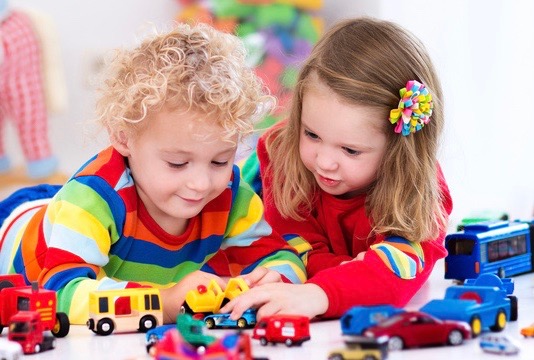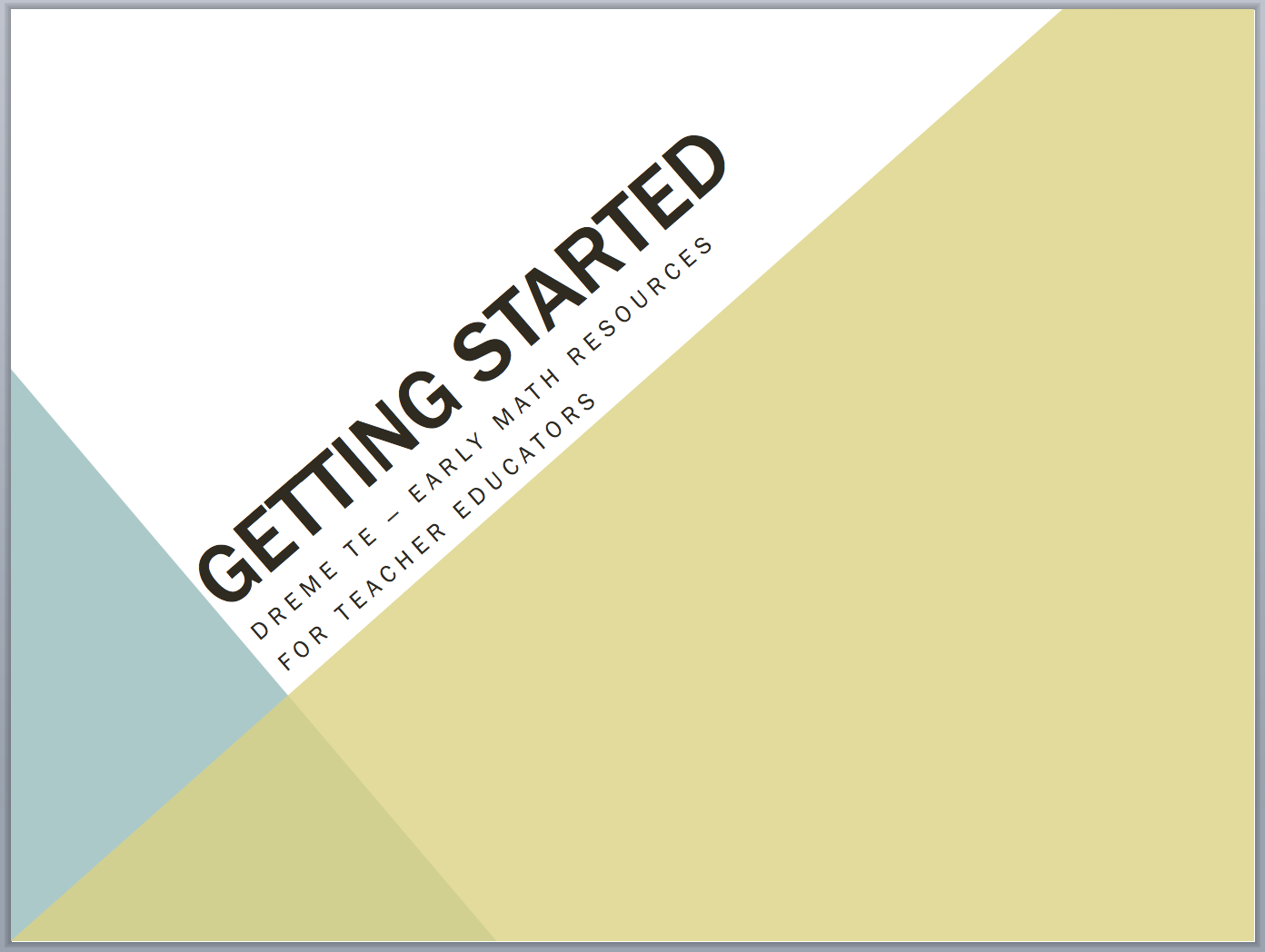A brief overview of the development of counting in young children. Counting is more complex than usually assumed and learning it can be challenging. Children learn some aspects of counting in their everyday lives, but benefit from intentional teaching too.
The Development of Counting in Young Children
Alyssa looked out of her hospital bassinet at the card the researcher had positioned just within her focus. Even though she was only two days old, Alyssa detected a difference between cards with two dots and cards with three dots, staring longer when the number of dots changed. When she was 14 months old, after watching her mother drop the crackers into two containers one by one, Alyssa consistently chose the container that had more hidden crackers over the identical container that had fewer crackers. By the time she was two years old, during a game she liked to play with Teacher Maria, Alyssa knew that if she put three balls into the cloth bag and Teacher Maria took out two, there was still one ball left in the bag. Alyssa was developing number sense, before she even knew the number words.
It seems that we were born to notice numerosity in the world around us. Even birds, lions, and chimpanzees have some arithmetic capabilities (and chimpanzees can even be trained to match some actual numerals to sets of objects!). Knowledge of numerosity is important (and arguably the basis of all later mathematics), whether used to check for missing eggs, to figure out if too many lionesses might be guarding a potential evening meal, or to make sure that we grab the container with the most crackers.
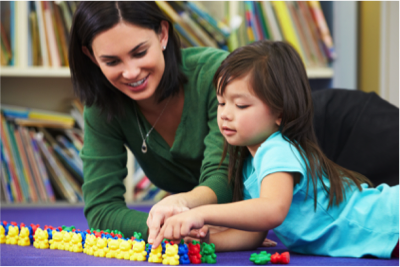 Not only are children born noticing numerosity, but as they grow older, they fall in love with its companion, counting. But, unlike knowing which of two groups is larger, or that adding one object to a set of objects makes the resulting set larger, counting requires the support of a more knowledgeable other. The reason is that counting requires language. Specifically, it requires number words. For centuries, children’s rhymes, games, and songs have set the stage for seemingly effortless and engaging acquisition of this domain-specific vocabulary that we know as verbal counting (sometimes called rote counting or counting out loud). Young children happily sing songs in which ducks disappear and monkeys fall off beds.But counting isn’t just knowing the number words. It also requires the ability to count a set of objects (or even sounds or gestures). And, this object counting ability also requires a more knowledgeable other, for counting objects accurately is quite complicated. Those who study children’s mathematical development explain that it involves five principles: (1) one-to-one correspondence between one and only one number word and one and only one object; (2) stable number word order; (3) cardinality (the last number word in the count represents the numerosity of the set); (4) order irrelevance (objects can be counted in any order); and (5) abstraction (items, even if dissimilar, can be counted as a set, or a collection of objects). If you want to see a toddler’s face light up, ask how many eyes or ears she has. These same happy toddlers can also count stairs and share sets of cars fairly (sometimes).
Not only are children born noticing numerosity, but as they grow older, they fall in love with its companion, counting. But, unlike knowing which of two groups is larger, or that adding one object to a set of objects makes the resulting set larger, counting requires the support of a more knowledgeable other. The reason is that counting requires language. Specifically, it requires number words. For centuries, children’s rhymes, games, and songs have set the stage for seemingly effortless and engaging acquisition of this domain-specific vocabulary that we know as verbal counting (sometimes called rote counting or counting out loud). Young children happily sing songs in which ducks disappear and monkeys fall off beds.But counting isn’t just knowing the number words. It also requires the ability to count a set of objects (or even sounds or gestures). And, this object counting ability also requires a more knowledgeable other, for counting objects accurately is quite complicated. Those who study children’s mathematical development explain that it involves five principles: (1) one-to-one correspondence between one and only one number word and one and only one object; (2) stable number word order; (3) cardinality (the last number word in the count represents the numerosity of the set); (4) order irrelevance (objects can be counted in any order); and (5) abstraction (items, even if dissimilar, can be counted as a set, or a collection of objects). If you want to see a toddler’s face light up, ask how many eyes or ears she has. These same happy toddlers can also count stairs and share sets of cars fairly (sometimes).
Counting Sequence
There is an ordered sequence of number names. Counting involves using the same sequence each time, starting with one. Extending the counting sequence is accomplished by repeating certain aspects of the previously used numbers in a structured way (according to our base-ten number system).
One-to-One Correspondence
Exactly one number from the counting sequence is assigned to each object in the collection.
Cardinality
The last number assigned to an object in counting the collection indicates the total quantity of objects in the collection.
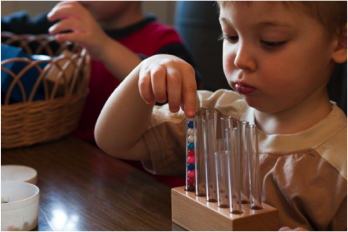 In order to develop a strong understanding of quantity, and eventually how to manipulate quantities (like adding, subtracting, or fair-sharing: what we call operations) children need an abundance of counting experiences. In order to provide our brains with the capacity to concentrate on the more sophisticated aspects of mathematics, counting needs to become almost automatic. Children’s growing skills in the accuracy of verbal and object counting support them as they grapple with cardinality, which is a necessary concept in operations. Struggling to remember what number comes next takes up a lot of working memory, and leaves little room for operations on even small sets. A child who is just learning the number sequence may need to pay so much attention to the order of the number words, he forgets to notice the last number counted.
In order to develop a strong understanding of quantity, and eventually how to manipulate quantities (like adding, subtracting, or fair-sharing: what we call operations) children need an abundance of counting experiences. In order to provide our brains with the capacity to concentrate on the more sophisticated aspects of mathematics, counting needs to become almost automatic. Children’s growing skills in the accuracy of verbal and object counting support them as they grapple with cardinality, which is a necessary concept in operations. Struggling to remember what number comes next takes up a lot of working memory, and leaves little room for operations on even small sets. A child who is just learning the number sequence may need to pay so much attention to the order of the number words, he forgets to notice the last number counted.
Providing support for young children as they gain expertise in counting isn’t as easy as 1, 2, 3. Children should feel engaged and develop conceptual understandings through meaningful activities, which takes skill on the part of the more knowledgeable other.
Group (or set) size affects children’s ability to solve number problems. Specifically, it affects their problem-solving strategy choice. As adults, we are also affected by set size. We can look at two small sets (for example, a stack of two books and a stack of three books) and almost immediately ascertain that we have five books. This is sometimes called conceptual subitizing: the ability to instantly recognize the numerosity of two or more sets and then add those two quantities in our heads in a split second. However, faced with a stack of 11 and a stack of 13 books, we will need to resort to some other method than conceptual subitizing. This makes it important to continue counting activities long past the time a child can count to twenty. Only through rich and ample opportunities to count a variety of things in a variety of settings for a variety of reasons can children gain the experience necessary in establishing a firm foundation for later more sophisticated mathematics.
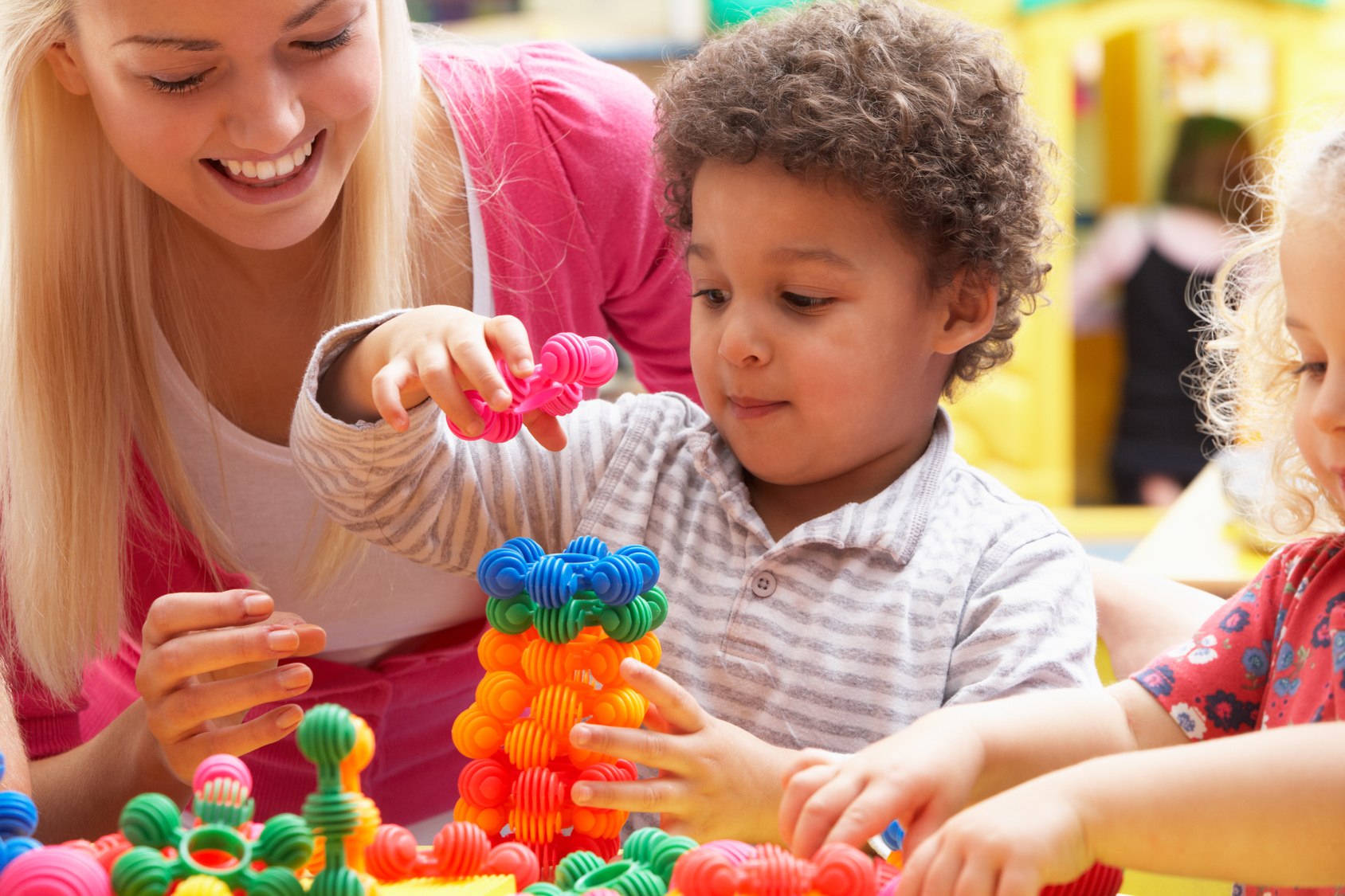 Teachers of young children need to be able to provide both planned and spontaneous counting opportunities. This can be difficult to do in an authentic way. Asking children to count objects, when, to them, there appears to be no reason to use or need that information can make children resistant to the activity. Teachers can, however, point out the usefulness of knowing how many and encourage the use of that knowledge.
Teachers of young children need to be able to provide both planned and spontaneous counting opportunities. This can be difficult to do in an authentic way. Asking children to count objects, when, to them, there appears to be no reason to use or need that information can make children resistant to the activity. Teachers can, however, point out the usefulness of knowing how many and encourage the use of that knowledge.
A repertoire of individual and small group counting activities is essential for children to hone their counting skills, as are activities that can be used in classroom transitions (e.g., washing hands, setting tables, and so on). Teachers who can view children’s play and peer interactions through a child’s perspective can more easily integrate counting spontaneously. Knowing that sharing a set of blocks fairly is important to children who are building two towers in a jointly-built castle can provide the inspiration for suggesting counting as a method of insuring fairness.
Math is too important to leave to chance learning in the classroom. Because of this, counting activities should be intentional. This means that they must be planned and purposeful. Learning how to include them in the preschool classroom throughout the day requires creativity and collaboration—which makes it perfect for an early childhood education course!


